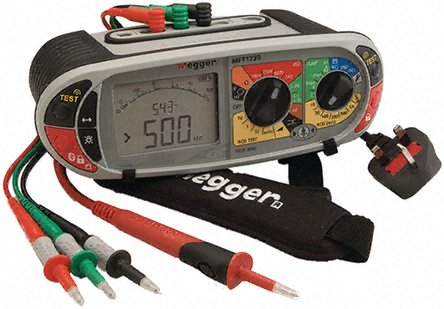Fixed Wire Testing: Observation Codes C1, C2, C3 and FI Explained

Observations are made when the inspector looks at and tests your fixed electrical installation. Items that are wrong or no longer conform to current standards are given codes based on their risk level. The inspector is not there to rectify any failings and he/she is only there to report them.
Fixed wire testing ensures your electrical installations are safe for continued use and the standards we reference to are published by the IET Wiring Regulations Seventeenth Edition also referred to as BS 7671 (18th Edition will apply from 1 January 2019).
After completing fixed wire testing of your installations will supply you with an Electrical Installation Condition Report (EICR). This report will indicate any problems or ‘observations’ which are coded according to their risk factor, but what do these codes mean?
Code C1
A Code 1 (C1) observation means ‘ Danger present. Risk of injury. Immediate remedial action required.’
It represents an immediate threat to the safety of you, your employees, customers or guests and should be rectified or made safe as soon as possible.
An example of a C1 defect would be accessible live conductors due to damage, poorly modified enclosures or removed maintenance panels.
Once a C1 threat is identified, will inform the duty holder or responsible person for the installation immediately, both verbally and in writing, of the risk of injury that exists. Access to the faulty circuit may even be blocked, or the circuit turned off until the the defect is fixed.
Code C2
A Code 2 (C2) is not as severe as a C1, but is still a potentially dangerous defect. They may not pose an immediate threat but are likely to become a danger in the future. A C2 is described as ‘Potentially dangerous – urgent remedial action required.’
The phrase “potentially dangerous”, in the C2 code is designed to point towards a risk of injury from contact with live parts after a sequence of events. A sequence of events could mean that an individual may gain access to live parts through a day to day task that would not be expected to give access to live parts.
Code C3
Code 3 is described as ‘Improvement recommended.’
This means something has been identified which does not comply with the regulations but isn’t actually dangerous. For example, the installation may not comply with the current version of the regulations or may have damaged fittings that do not have exposed live parts. A code C3, in itself, should not warrant an overall unsatisfactory report.
You will need to address C1, C2 and FI faults on your report in order to achieve compliance with electrical safety regulations. However it’s always good practice and usually well worthwhile considering rectifying all faults on site. You do not need to have the whole installation re-tested after the repairs have been completed.
Code FIAn observation code FI is described as ‘ Further investigation required without delay.’ This means some aspects cannot be verified or further information is required before a decision can be made.
Unsatisfactory EICR Report
Codes C1 and C2 attract an unsatisfactory report rating and you must have these defects rectified in order to demonstrate compliance.
A report could also be classed as unsatisfactory if the only fault codes are FI. For example if there are lots of circuits that are not verified at the time of testing, and each has an FI code, the inspector would not be able to categorically determine whether these circuits are safe or not.
Electrical Installation Condition Report (EICR)
Once faults have been rectified and you have been issued you with the relevant paperwork, Electrical Installation Certificate (EIC) or Minor Works Certificate (MW) these should be kept together with the Electrical Installation Condition Report (EICR) to prove all faults have been rectified in accordance with BS7671. You will have a Satisfactory report and then be told the frequency at which your installation should be tested.
